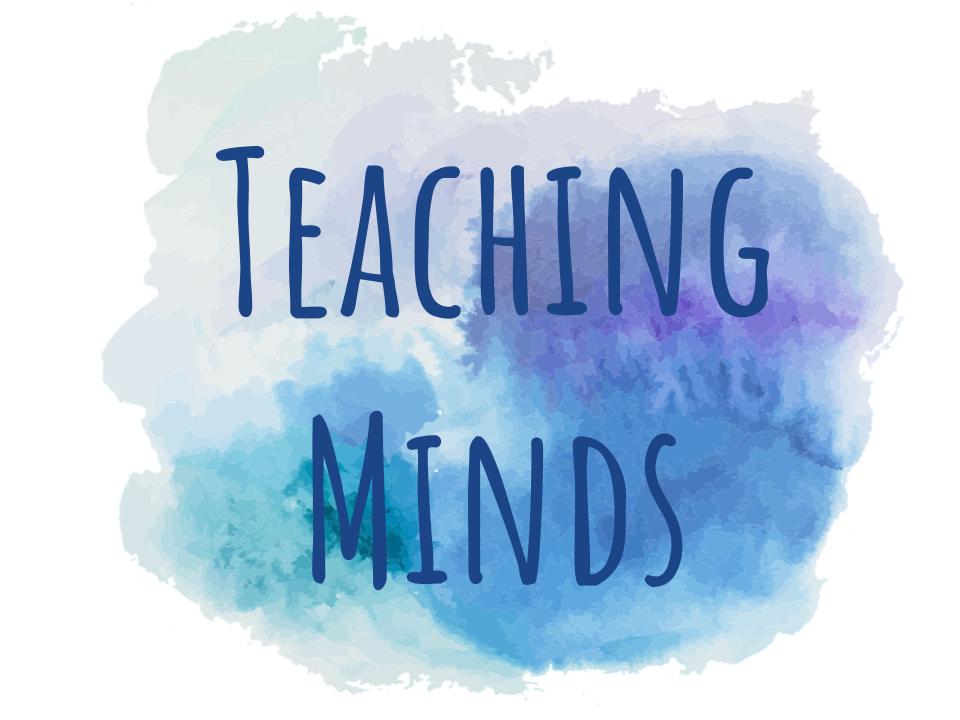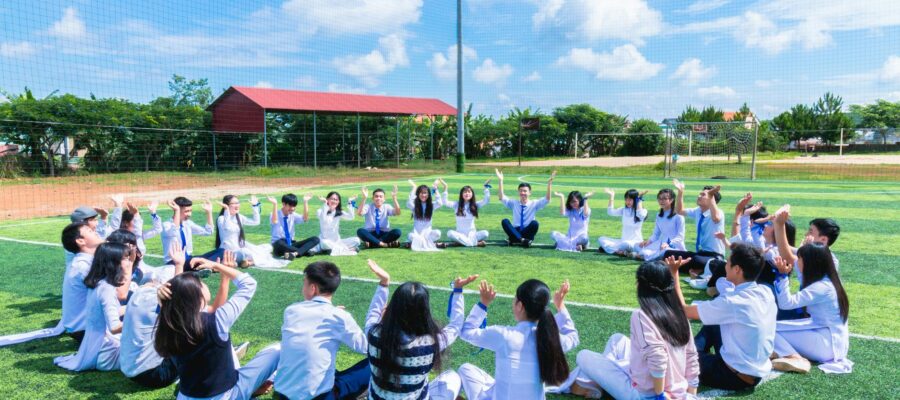Although I remember ‘circle times’ from when I was at primary school, in my ten years as a classroom teacher, it is not something I’ve experienced as common practice, especially in British Curriculum schools. It may be a practice used more in American schools which draw inspiration from the Talking Circle used by indigenous people of North America. It was during my time working at an international Canadian school that I was introduced to the real benefits of class circles along with restorative practice. Since then, I have tried to embed it somewhat regularly into each class I’ve taught.
What is circle time?
In North America, circle time is much more commonly referred to as class circles. The basic concept is that everyone in the class or group sits in a circle formation and engages in activities or discussion together for approximately 30 minutes. The focus of this time is on developing community relationships. The circle shape is especially beneficial as everyone is able to see each other and there is no obvious hierarchy: even the ‘circle leader’ is seated at the same level as all the other participants.
Why circle time?
Community and belonging
Most schools aspire towards a strong community and sense of belonging for all. Although there are many ways of promoting this, in the midst of a busy school week, it can be easy to lose it as a priority. A timetabled weekly circle time can avoid the priority becoming lost at the bottom of the pile of curriculum and scheduling demands, ensuring that you have some regular breathing space and time to connect as a class.
Embedding restorative practice
Another huge benefit of circle time is in the way it can embed restorative practices within the classroom culture. Many schools are moving towards a restorative over a punitive approach in their behaviour policies but it can take some time to truly embed it into the community. Dedicating some circle time to restorative practice gives students (and teachers) the chance to understand and practise the skills of restorative conversation. This in turn leads to a much greater chance for it to be truly embedded and valued as a practice for the whole community.
If you missed the link earlier, find out more about restorative practice here
How to begin a successful circle time practice
How often:
A timetabled weekly session is the best way of reaping the benefits and ensuring the practice actually happens. When it is a part of the regular routine, children become much better at following the routine and remembering the agreements. It more quickly becomes established as a safe space to share allowing more reserved students to feel comfortable in participating. In a school where this dedicated time wasn’t given but an hour of PSHE was, I would use this as part of the allocated PSHE time. If there really isn’t time, it’s probably something to raise with the leadership team 😉
How long:
Usually 30 minutes is enough time but occasionally you may want longer, especially if more restorative discussions are needed. Some of the community building games that are popular can be built in at other times as well (not necessarily in a circle format).
It can be especially beneficial to dedicate some more time after a break or if things are going a bit off track in class (e.g. there have been some recurring behaviour incidents that need addressing).
The expectations of a circle
Respect the talking piece
A talking piece is often used during circle time. It can be anything that is easily passed from one student to another. Natural objects can be great options; Indigenous Talking Circles often use a decorated ‘talking stick’ but really anything will be ok. I once used a big jar of glitter when nothing else was around! You don’t always need to use a talking piece; sometimes it will make sense to simply call on students who raise hands. But when you do use one, establish the expectation that the person holding it is the only one who should be speaking, everyone else should be facing them and actively listening. This is also a great way of maintaining order when circles become excited or heated!
Respect each other
We want students to feel safe to express themselves in the circle. This happens when there is trust between students but this is not a given, therefore sharing should be invited but always with the option to pass. Beginning with low risk questions and games is a great way to establish the circle routine. Over time, prompts that invite more intimate exposure of personal thoughts and feelings can be given, helping to slowly develop a culture of trust and respect for others. A clear indicator that students don’t feel safe to share yet is the level of participation they have. If many students are passing or if sharing is superficial, this is a cue to spend some more time on activities which can build community.
The Circle Routine
Most circle times will follow a similar routine taking around 30 minutes but up to 45.
| Expectation Reminder (approx 2 minutes) | After dedicating a circle time to discussing expectations, continue to refer back to these at the beginning of each circle until they are well established. After this, having them visible may suffice. |
| Circle Opening (approx 5 minutes) | This is an opportunity for a quick check in with low pressure opportunities for all to participate. A quick mix up game can also be useful here if students tend to sit in the same friendship groups. |
| Circle Focus (15-30 minutes) | Where you work on the main goal of the session e.g. building relationships with games, developing speaking and listening skills with discussion, solving problems through restorative practice. |
| Circle Closing (approx 5 minutes) | Time to round out the circle and provide opportunities to reflect or offer feedback. Some silent reflection or meditation can also work well here. |
The Two Types of Circle: Preventative and Responsive
Preventative Circles – Building Community
Preventative circles are intended to give students the opportunity to get to know each other and establish positive connections. Every circle includes a community building element beginning. Some circles focus on this exclusively through games, discussion (especially if they can encourage some respectful disagreement e.g. would you rather questions), sharing memories or anything else which invites laughter, joy or insight into each other’s lives.
Responsive Circles – Responding to challenging behaviour or harm
Responsive circles use specific high-quality questions to explore challenging circumstances and move toward making things right. Choosing questions that are “real” for the students is essential to eliciting content that matters. When the content matters, the circle will be energized and focused. This can be practised with some pretend but realistic scenarios, but the eventual goal of discussing the real concerns or issues that are present in the class.
Tips for Responsive Circles
Establish a way that students can raise the concerns they have
One effective method I have used is a ‘Post Box’ or a ‘Worry Box’ situated somewhere in the classroom. This allows students to ‘post’ any issues they are having with a written note, choosing to stay anonymous if they want to. When I have established this in class, I have found that problems tend to be caught much earlier than they would if students had waited to speak to me about it. Feedback from students and parents about this type of reporting has always been very positive.
Possible circle set ups for responsive circles
Basic circle – the leader can pose a question to the group which they can respond to by passing the talking piece around. They always have the option to pass but give them a second opportunity by passing it around again.
Popcorn – this may involve the leader inviting those with their hands raised to speak. For older students experienced with circle time, you may be able to challenge them to contribute their ideas without raising their hands while avoiding interrupting each other.
Fish bowl – after opening the circle, invite volunteers or a selected group to form a smaller circle in the center. Those who are not in the center are instructed that they are active in the circle in the “witness” role. The circle dialogue is conducted with those in the center. Those in the outer circle stay silent until they are asked for witness comments. Witness comments may be elicited at any point during the circle, and should always be elicited at the end of the circle.
Key question prompts for responsive circles
- What happened/ has been happening?
- What was/is the worst part of it?
- Was/is that fair or unfair? (kind/unkind etc)
- Who was/is being harmed?
- How do you think … felt/feels? (try to get feelings from all sides)
- How do you think… was/is affected by this?
- What could be done to make the situation better now?
- What could be done differently in the future?
You may then want to create some specific agreements to avoid future issues.
Follow up with these questions:
- What have we agreed to? (you may want to write down any agreements to refer back to)
- What’s a fair consequence if people don’t follow through on the agreements?
- Is there anything else anyone wants to add before we finish?
Many of the ideas stated here were taken from this resource developed by the Center of Restorative Process. I found it invaluable when beginning more restorative focused circles
Further resources and ideas can be found on Teachers Pay Teachers


